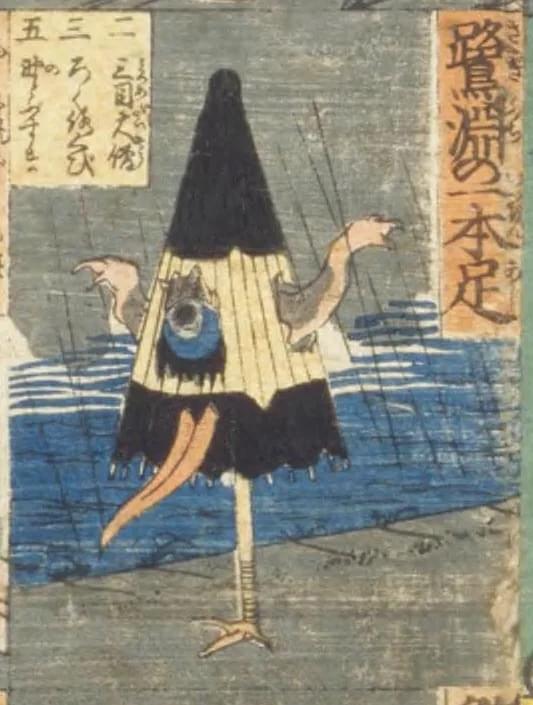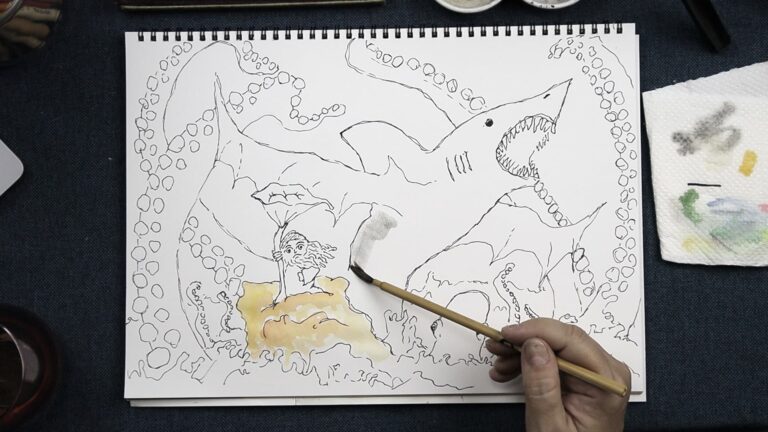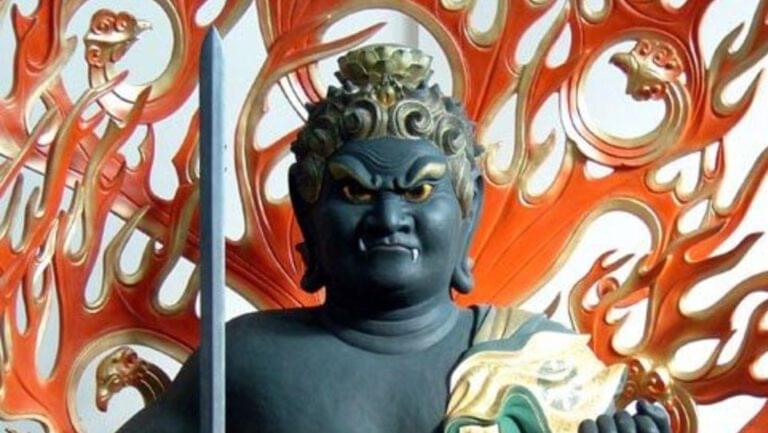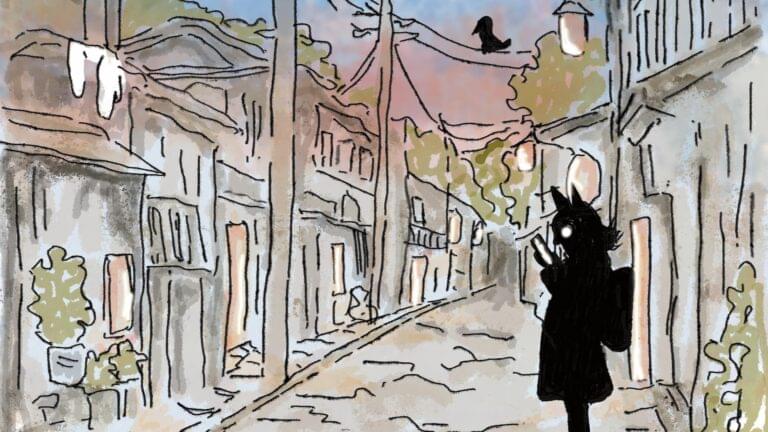In Japan when an inanimate object reaches its 100th birthday and perhaps it was mistreated, or lost, or thrown away, it gains a soul and might possibly start playing tricks on people. This is called tsukumogami, or haunted artifacts. In this episode of Uncanny Japan, I talk about the tsukumogami and some traditional ones you could run across on a dark spooky night.

Hey hey, everyone, how are you this end of the year? Are you feeling pensive? Reflective? Maybe chomping at the bit for 2020 to hurry up and get here, so you can start working on all your new year’s plans and goals? Are you insanely busy because you quit your job, and on top of that you need to move and don’t know where your next paycheck is coming from? Yeah, me, too.
I guess that’s a nice segue into how I just realized I’m going to be celebrating my second-year anniversary on Patreon in late January, and I’m planning to do a relaunch; making everything super spiffy, offering some new benefits, limited offer campaigns, possibly audio serializing one of my stories from The Carp-Faced Boy, and stuff like that. I’ll talk more about that next month. For now, though, if you like the show, like Japanese bedtimes stories, homemade postcards, and recipes, we’re all over on Patreon, just search for Patreon and Uncanny Japan and we’ll pop up.
Erratum
Okay, before I get into today’s topic, I want to make a correction to the last episode about Tsuno Daishi – the great horned master. Remember I talked about the legend of a fire that destroyed a temple dedicated to Tsuno Daishi, and how during that fire the statue depicting the great horned one flew off and hid in the lake to escape harm. Well, it turns out, I got the name of the temple wrong. It’s not Jidai-ji but Jindai-ji. So if you’re looking for that, search for Jindaiji and Tsuno Daishi, not that other thing I said. A big thank you to Peter Durfee for catching that. Thank you!
Also, my apologies for the podcast being later than usual, I wasn’t kidding when I mentioned quitting my job and moving. And that’s just a crumb of it. I don’t think I’d be exaggerating too much if I said life recently has been insane. The good news is, it looks like in my new abode, I’ll actually have a kind of cubby to record in – a space all my own – and not a desk in a one room apartment with blankets strung up on three sides like now. Some other pluses: no dirt farm, no constant slamming of car doors, and no hungry, sleepy and/or soiled babies crying. So I’m very excited about that.
Now on to Episode 44. Let me tell you a little story about how I first learned about this wonderfully weird thing. Almost thirty years ago I went with my mother-in-law to visit her mother, the family’s matriarch or hi-obaachan which means great grandmother in Japanese. She was affectionately called Fumi-baachan and you can find her likeness in several of my stories. She’s always the good guy. Unlike my mother in law, she was so kind to me and I adored her.
Anyway on this particular day I remember sitting on the floor, around a low kotatsu table, drinking tea, eating mikan, and listening to my mother-in-law and Fumi-baachan chatting about life and stuff. The tea pot we were using was really old and I must have bumped one of the little cups so they clinked together or something. My mother-in-law, said, “Be careful, you don’t want to make it angry or it’s going to play a trick on you.”
My gaping mouth must have asked the question that I couldn’t. Because that’s when Fumi-baachan went on to tell me how in Japan all objects, once they reach their 100-year birthday, gain a soul. They become alive and a little mischievous, especially if they had been treated badly or tossed out and forgotten by their owner. That’s why, my mother-in-law added, we should always take care of our stuff and treat it well, or it will come back to haunt us. What a brilliant idea!
What are Tsukumogami?
The name of this phenomena is called tsukumogami. It’s been translated in so many different ways. I’ve seen it written as Tool Specters, Haunted Relics, 99 Gods, and Artifact Demons to name a few. Basically, the idea is just that, on the 100th birthday of an inanimate object, it is granted a spirit or soul and becomes a living thing, capable of playing pranks and causing trouble.
While in theory this can happen to any inanimate object, there are a handful of well known tsukumogami that you’ll run across when reading Japanese manga, watching anime, or studying yokai. I could probably do an entire show on just one of them, so I won’t get too nitty gritty here. I can revisit in more detail some of the more popular ones later. For now I want to give you the general idea of what Artifact Demons are. Here are a few of my favorites:
Kasa Obake
The first one I’ll talk about is called the kasa obake or the kara kasa. Imagine one of those Japanese old-fashioned, lacquered umbrellas. Now see it one hundred years old, the thick washi paper is dirtied and torn, the thin bamboo ribs are snapped and broken. What’s really unnerving though is that since becoming a tsukumogami, the thick handle has turned into a single bare leg, a man’s leg, hairy and pretty gross. But that’s not all, the kasa obake also sports a single big, non-lidded eye and a huge lolling tongue. Sometimes you’ll find it with arms sticking out from its sides. Kasa obake, like most tsukumogami aren’t out to do any real harm, they just enjoy scaring people. So you’ll run across this artifact demon on dark nights, jumping out at you and then hopping around wildly. Possibly cackling like a lunatic. No real harm done.
Chochin Obake
If you do run across it, be warned, it might not be alone. The kasa obake has a friend that it likes to hang out with. This would be the chochin obake or paper lantern ghostie. Here, too, you have to picture an old Japanese lantern. Washi paper or silk glued onto thin bamboo ribs, an oil candle burning inside. Because chochin are so fragile they tend to break the same way, the cloth or silk ripping, horizontally between the strips of bamboo. These tears, upon reaching year one hundred are what become the mouths. And what can you find protruding from these mouths, you guessed it, a great big tongue. An interesting side note is in some old artwork the tongue is actually the flame from the candle, spilling out. Chochin obake also have eyes, either one or two. You’ll find them flying about, spooking whoever is around.
Ittan Momen
Next let’s talk about the ittan momen, or as I’ve seen it translated, the one-bolt of cotton cloth. Ittan means one ‘tan’, and a tan is about 10 meters by 30 centimeters. So an ittan momen is a very long piece of white cotton cloth that flies and flutters around causing havoc. Sometimes it surprises people and then zooms away. Other times it might wrap itself around their faces until they suffocate. There are also tales where the ittan momen envelopes some innocent bystander and flies away and they’re never heard from again. My image of them though is always nice guys. Actually, if you’ve seen the Japanese anime Ge Ge Ge No Kitaro, you’ve probably seen an ittan momen, as its one of Kitaro’s close friends. Here, however, it’s called a Rollo Cloth.
Biwa Bokuboku
There are some other tsukumogami that are musical instruments that have reached a ripe old age and have possibly not been treated well or perhaps their master has passed away and they’ve been forgotten. Two are the biwa bokuboku and the koto furunushi.
A biwa is an short-necked wooden lute originally from China. That’s what it looks like when it’s merely an instrument. When it becomes sentient, however, it looks like an old biwa player, the body of a human, the head of a lute, eyes closed because very often in days-of-old the biwa player was blind.
Koto Furunushi
Then we have a koto furunushi. Have you ever seen a Japanese koto? It’s this long, low to the ground, stringed instrument, that is plucked with two hands my a very elegant woman in a kimono, kneeling on the floor? Well, shen a koto makes the turn, its “face” becomes that of a demon and all 13 broken silk strings stand out around it, like wild hair. Pretty cool.
Other things that tend to turn into haunted relics are futons, straw sandals, saddles and stirrups, scrolls with sutras written on them, mirrors, prayers beads, kimono, sake jars, a radish grater and, of course, mosquito nets.
For More Information
If you’d like to look at some old artwork depicting these oddball creatures, I recommend searching for Toriyama Sekien’s work. He was a scholar, poet and ukiyo-e artist who lived from 1712-1788. I think the thing he’s most well known for, though, is his Hyakki Yagyou, the Demon Parade Scrolls. He gave form to so many of Japanese youkai and otherworldly creatures. What’s relevant here, is that his last book was called Hyakki Tsurezure Bukuro, The Illustrated Bag of One Hundred Random Demons. This was actually a play on words. With all his other books the kanji for hyakki was “one hundred demons”. With this last work, though, he changed it to “one hundred vessels”. Vessels being all those inanimate objects that make up the tsukumogami world. So this whole book is filled with haunted relics, most of which are beasties from his own imagination. So that’s a brief little description of the tsukumogami.
Here it is the end of December and I’m hoping everyone is looking forward to the new year. If you want some old fashioned Japanese good luck that will last all through 2020, then go back and listen to Episode 2 of Uncanny Japan, where I talk about what you need to dream about and why, on new year’s eve to insure fortune and favor. Hint: Eggplant. Also please note the difference in audio quality from then to now. That has been made possible because of my behind-the-scenes Sound/Tech guy. Thank you so much, Sound/Tech guy!
I also want to thank every single one of you for listening and supporting the show this past year with a special huge thanks to my patrons who make this and the Bedtimes Stories all possible. I’m going to be literally moving on Christmas eve and day, but we were able use some Patreon money to buy a new microphone for the show and two nice lavaliere mics for the patrons-only Behind the Curtain segments.
So to everyone we would like to wish you all a Happy Coming New Year. Yoi o toshi wo!
Credits
Intro and outro music by Julyan Ray Matsuura







This may be my favorite episode of the podcast so far! The description of each tsukumogami is so funny and vibrant, it shows your passion about this topic.
Also, thank you for recommending the outstanding art of Toriyama Sekien! That koto furunushi is going to become my avatar icon <3
Thank you so much, Sara! Thank you for listening and, yes, I just love the tsukumogami and Toriyama Sekien is a hoot!